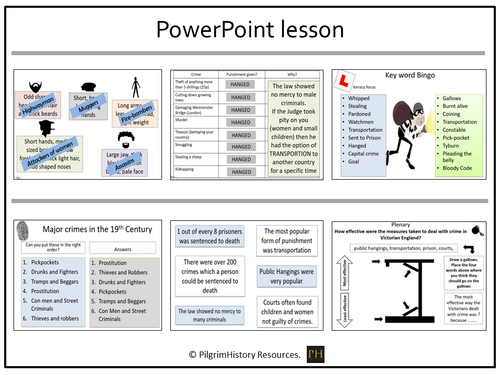


The Industrial Revolution
The aim of this lesson is to question how effective Victorian justice was.
This is an interesting and engaging lesson for students as they decide who was a criminal (from their looks), which were the most common crimes in the early 1800’s and what you could expect at a public hanging though some source analysis.
By the end of the lesson, students will be able to answer the following questions:
Why was it so easy to commit crime in the Victorian period in the early nineteenth century and if you were unfortunate to get caught what could you expect from Victorian justice?
What was the Bloody Code and why was the law so harsh to offenders irrespective in some cases of sex or age?
There are also three case studies to unpick and students are left questioning the morality and effectiveness of the punishments inflicted.
Please note that the reform of the criminal justice system is dealt with in other lessons such as the Victorian prison system and the setting up of the Metropolitan Police force by Sir Robert Peel and the abolition of the Bloody Code.
There are a choice of plenaries from hangman to bingo and heart, head, bag, bin which get the students to prioritise the most ‘effective’ methods used to deal with crime.
The lesson is enquiry based with a key question using a lightbulb posed at the start of the lesson and revisited at the end to show the progress of learning.
The resource comes in PowerPoint format if there is a wish to adapt and change.
I have also included suggested teaching strategies to deliver the lesson and there are differentiated materials included.
Something went wrong, please try again later.
Excellent examples, clearly explained
The whole bundle is worth its weight in gold.... Engaging for students as well as built in activities which link to current pedagogy on retrieval practice! Highly recommend. Great work
Report this resourceto let us know if it violates our terms and conditions.
Our customer service team will review your report and will be in touch.